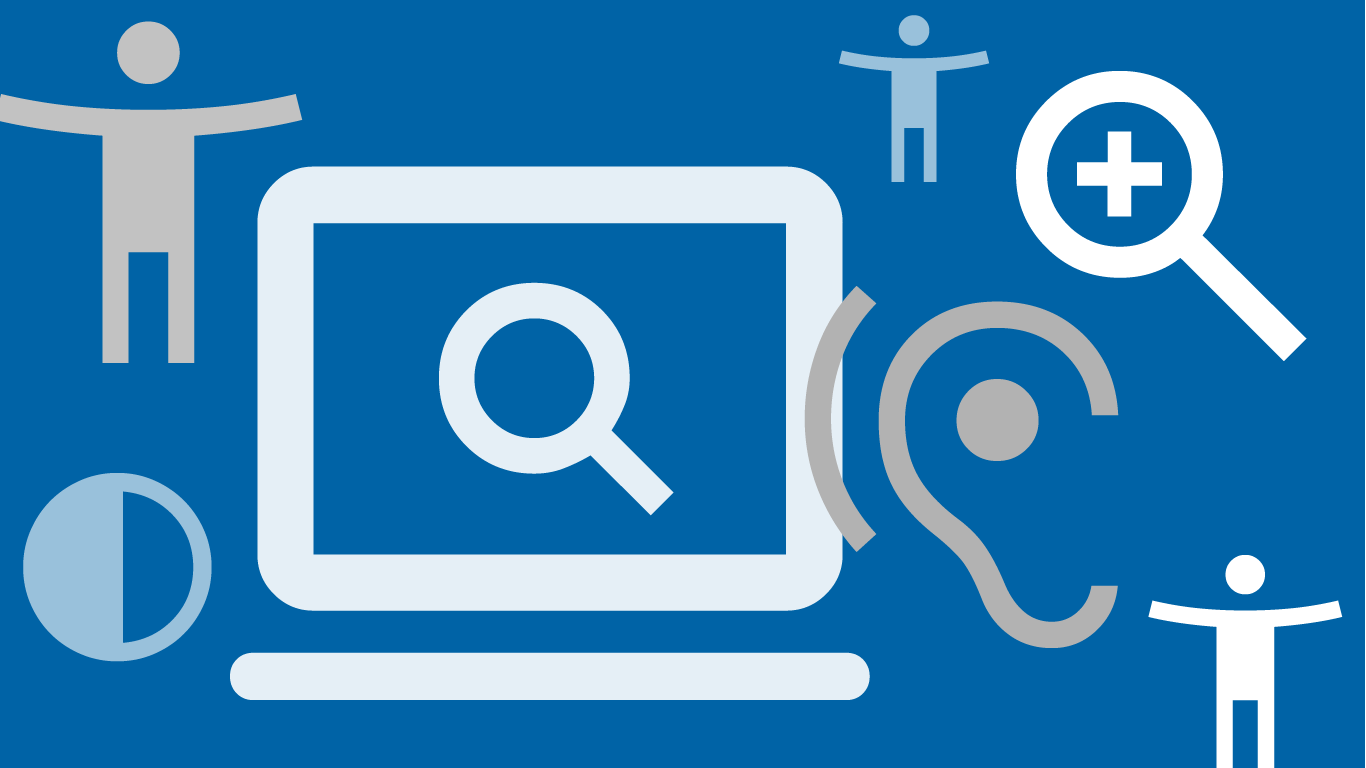In order to be able to implement digital accessibility across the board at the University of Vienna, awareness of this topic must be created on the one hand and the knowledge for the corresponding implementation must be imparted on the other.
Basic knowledge for all interested parties
A new online course created by the Digital accessibility project group in collaboration with the Centre for Teaching and Learning and the agency WIENFLUSS serves this purpose. The course has been implemented as a MOOC. MOOCs (Massive Open Online Courses) are online courses that can be attended free of charge and independent of time and place. They combine videos and other materials, such as texts or further links, with discussion forums and quizzes.
The course is primarily aimed at those responsible for and editors of websites at the University of Vienna, but is open to the public and therefore accessible to all interested parties.
To the MOOC Digital accessibility (in German) on the platform iMooX
6 lessons introduce users to the following topics:
- understanding the legal framework
- designing accessible digital content using TYPO3
- ensuring accessibility in digital projects
- checking websites for accessibility
- gaining insight into the usage behaviour of people with disabilities
“Our MOOC is a starting point that provides editors, for example, with basic information about digital accessibility,” explains Rainer Jantscher, who heads the Digital Accessibility project group and initiated and coordinated the MOOC. “It was important to us not only to impart knowledge through lectures, but also to provide a variety of information. For example, we were able to get Mathias Schmuckerschlag, a blind student, to make a video. In it, he shows live how he uses digital services at the University of Vienna and the barriers he encounters.”
In the videos, a total of 5 interviewees broaden the perspective on the topic of digital accessibility. One of them is Victoria Purns, Head of the Monitoring Centre at the Austrian Research Promotion Agency (FFG). The monitoring centre surveys the extent to which the digital services offered by public bodies in Austria are accessible.
Flexible and interactive
Each lesson of the MOOC consists of 1 to 4 videos, which also include interactive elements such as reflection questions and supplementary content. Users can either work through all the lessons or videos flexibly and according to their needs or only those that are of interest to them. The lessons can also be completed in any order.
Participants can also use forums to discuss the content of the MOOC. A quiz at the end of each lesson helps to consolidate the knowledge acquired. Users who have answered 75 % of all questions per lesson correctly also automatically receive a certificate.
Further courses (in German)
In addition to the MOOC, in-depth online courses are available for employees. They cover the creation of accessible content using the following tools:
- PDF documents from Word
- PDF forms with Acrobat Pro
- TYPO3
- WordPress
More information and the possibility to book can be found in the course database.
Why is digital accessibility important?Digital accessibility is crucial so that people with disabilities can use the University of Vienna’s websites, digital documents and IT services without restriction and thus participate in university life in a self-determined way. In addition, the Web-Zugänglichkeits-Gesetz (Web Accessibility Act) stipulates that digital information services provided by the public sector, and therefore by the University of Vienna, must be accessible. This means that these digital services must be perceptible, operable and understandable for people with disabilities. |

